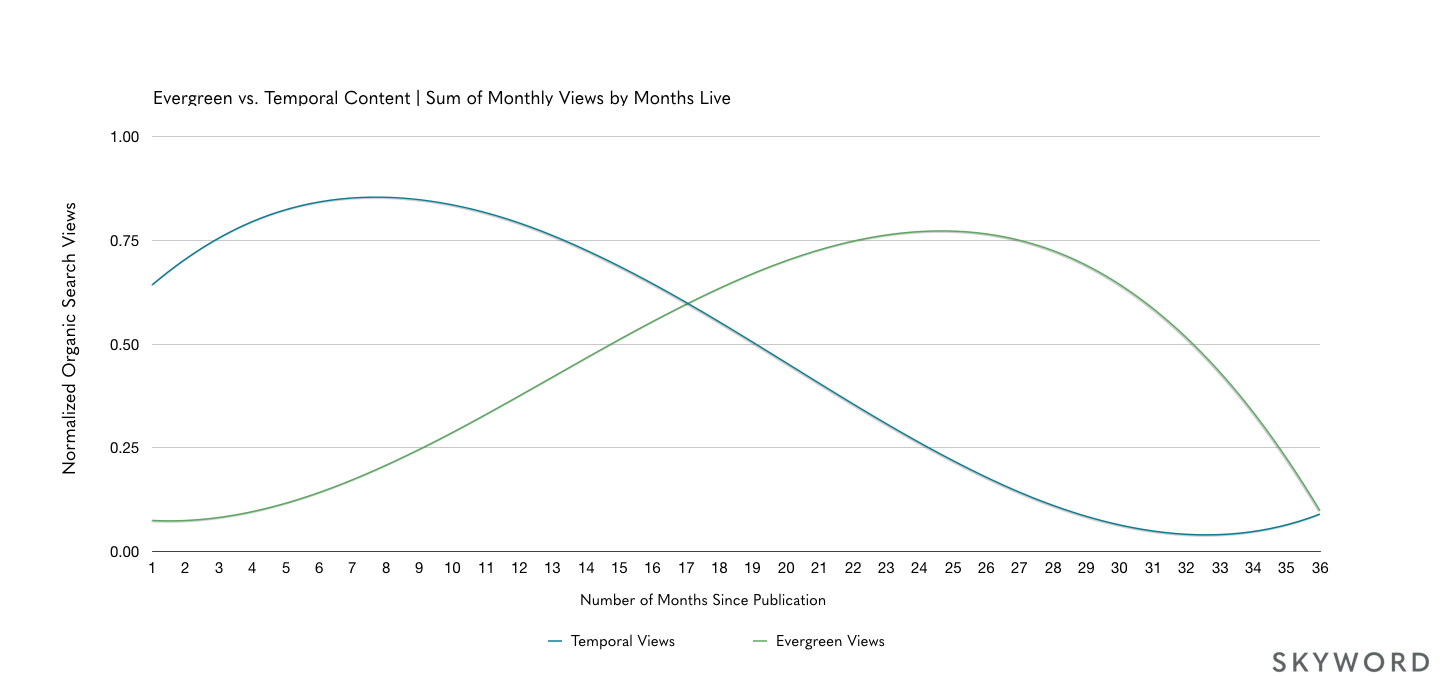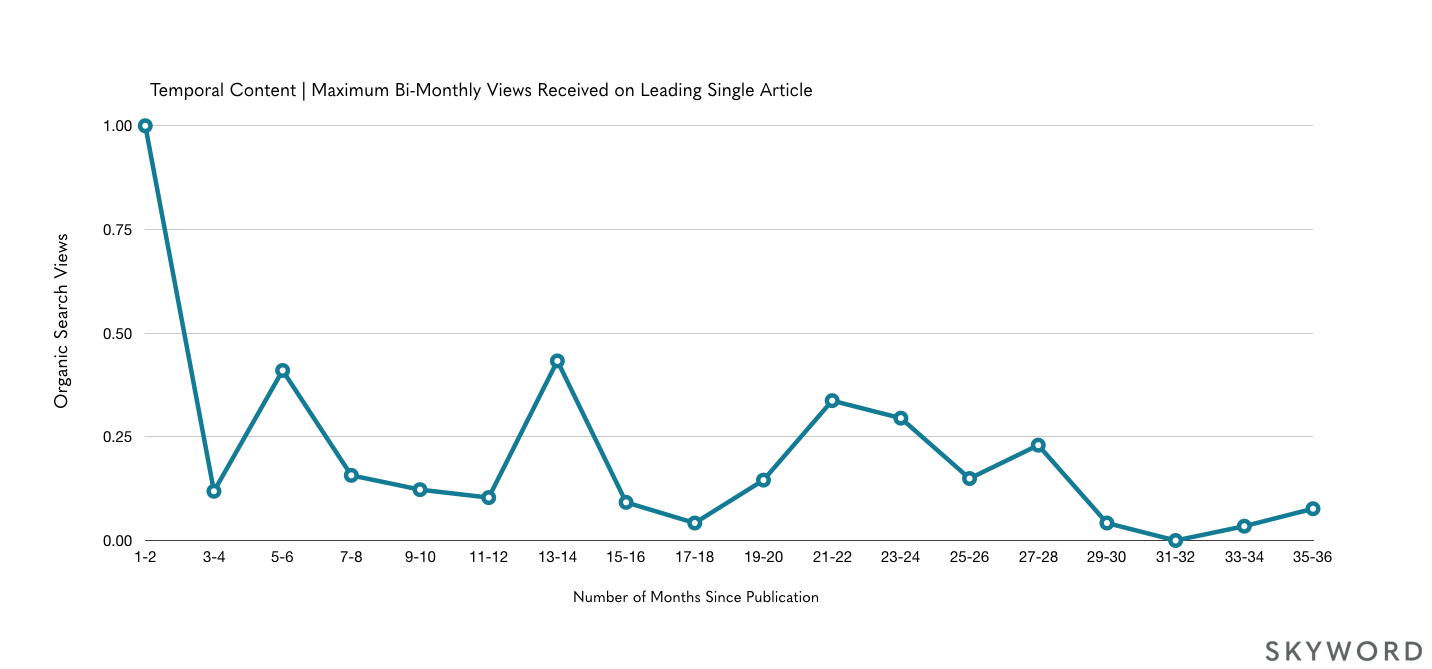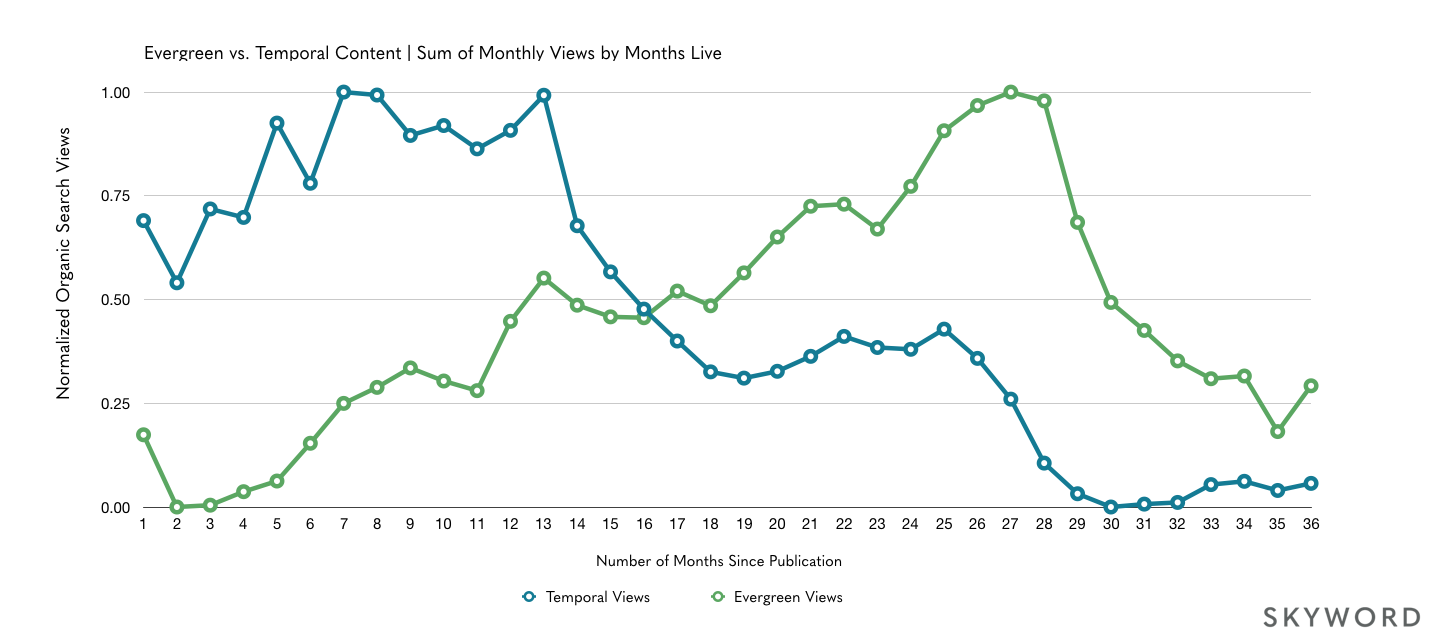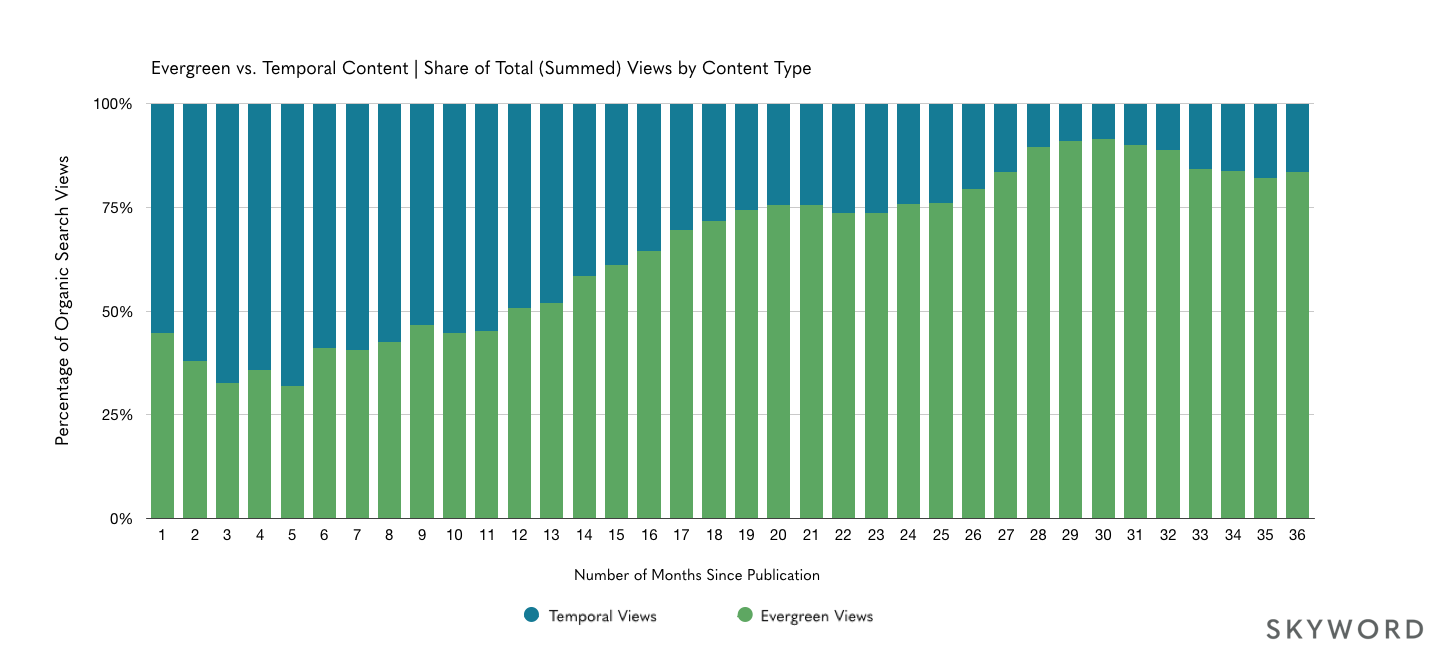Content Strategy
Why Your SEO Content Strategy Needs Temporal and Evergreen Pieces to Maximize Traffic
By Jonathan Crowl on May 12, 2020
Not sure how to proceed with your existing content strategy in light of COVID-19? You're not alone. After the pandemic turned everyday life upside down, brands had no choice but to overhaul their existing editorial calendars and refocus their content on audiences' new needs. They also needed to reassess their SEO content strategy. Some even hit pause on content creation altogether.
Although much is still in the air as the weeks advance, there's one certainty: Going all-in on COVID-19-focused content isn't the way to go.
Across brands, there's always been a bit of tug of war between temporal and evergreen content. Temporal content draws its relevance from time-sensitive topics or events and can boost site traffic quickly as a result. By contrast, evergreen content doesn't root itself in a particular time or event, giving it longer-lasting value than temporal content. Both types of content deliver relevant information to your target audience. However, producing only temporal content during a crisis can make your brand appear opportunistic and unempathetic. It can also divert your attention away from supporting your audience's current and future needs.

What you need is a content marketing strategy that balances both temporal and evergreen content. In researching the search performance of these types of content, Skyword found that having a mix of both is key to generating traffic and ROI. This doesn't mean you can just deliver any old temporal and evergreen pieces, though. You'll also need to ensure that this content is engaging, valuable, and designed with your target audience in mind.
Here's a look at the key takeaways from Skyword's data as well as some recommendations on how to guide your SEO content strategy through these uncertain times.
Connecting Timely Events to Recurring Business Challenges
Make no mistake: The impulse to address timely audience trends or business challenges in your content is the right one. As the COVID-19 pandemic brings change to virtually every industry and individual, your brand can't just ignore what's going on and how it may be affecting your audience. Creating temporal pieces allows you to address these factors head-on while delivering tangible benefits to your SEO content strategy.
As Skyword's data shows, temporal content typically delivers quick spikes in traffic because it's tied to topics and events that are generating a lot of online search activity. Applying your brand lens to temporal topics is an opportunity to capture new eyeballs and give your overall traffic results a quick boost.
One example of this is creating content around the CARES Act. Whether you're providing tips on how to apply for money or explaining the ins and outs of the law, content focused on the CARES Act is likely to draw very strong organic search traffic during this period. Hyper-focused content such as this will quickly lose its value once it's no longer timely. However, temporal content doesn't necessarily have to deliver all of its value in the short term.
When this content is connected to recurring or seasonal challenges, such as holiday shopping or filing taxes, it can continue delivering value through periodic upticks in relevant search activity. The chart below shows how leading temporal content experiences periodic spikes in organic search views in the three years after it's published.

But how do you produce temporal content that also feels evergreen? Well, a mobile security company might see an opportunity to publish a series on device management and endpoint security, given the increased role mobile hardware plays in maintaining business continuity during COVID-19. This content has immediate temporal value and may see periodic upticks in traffic over time, specifically as new security breaches and mobile security challenges develop.
Creating Today's Content for Tomorrow's Audience
Unlike temporal content, which is primarily focused on immediate results, evergreen content gathers steam over time and offers a sustained source of traffic over a period of years. As the chart below illustrates, evergreen content generally takes about 17 months to surpass the traffic driven by temporal content. After that point, this content quickly assumes a majority share of temporal content's traffic, maintaining that share on average for the next 19 months.

Over the course of three years, evergreen content accounts for roughly two-thirds of all organic search views. It also plays a significant role in raising or maintaining the search ranking for your content, which can help drive more traffic to your site. Evergreen content can also help generate compound viewership by attracting more backlinks, a process which also helps strengthen your brand's SERP rankings and drive ROI.
Evergreen topics may be less centered on specific events, but they can still offer information that's relevant to search trends or current events. Content that deals with business resiliency, for example, is highly relevant given the current pandemic, but it also offers an extended timeline for driving traffic because it addresses a perpetual business challenge.
Achieving Balance to Stabilize Content Performance
During periods of disruption, brands are often reluctant to publish evergreen content because it doesn't feel relevant to their audience's current needs. But evergreen content can feel temporal without having an expiration date. Additionally, publishing this sort of content is a smart future-focused strategy, one which leans on the instant returns of temporal pieces to balance your SEO content strategy.
And during the COVID-19 pandemic, publishing evergreen content alongside temporal content is especially crucial. By offering this balance, your brand can generate the traffic it needs over the weeks and years ahead while also addressing the current and future needs of your audience. Not to mention, publishing a balanced mix of content shows you understand and empathize with what your audience is going through and aren't just looking to capitalize on the moment at hand.
As the chart below illustrates, temporal and evergreen content complement one another. While temporal content drives the majority of total organic search views in the months after it's published, evergreen content takes over that majority share around the one-year mark. And by the third year, evergreen content takes over a significant percentage of temporal content's organic traffic.

Building Authority and Avoiding Shortfalls
Temporal and evergreen content also have an integrated relationship with regard to search visibility. When it's published by a site with demonstrated historic content relevance to its subject matter, temporal content is more likely to achieve greater visibility through organic search. Evergreen content plays a huge role in demonstrating that relevance.
By continuing to publish evergreen content alongside timely content, you're laying the groundwork to extend the reach of future temporal pieces. Although you may be tempted to focus your content creation efforts entirely around current events, doing so by default leads to a shortsighted content strategy that leaves no room for evergreen content. In turn, this move will likely hurt both your organic search traffic and your overall content performance.
Sudden events and business developments can throw your editorial calendar into disarray. Although you can't control how or when these disruptions occur, you can address them by actively calibrating your content strategy to include temporal and evergreen pieces. Achieving this balance isn't easy, by any means, but it's a best practice worth adopting as it keeps your content strategy healthy and successful, helps you stabilize your business operations, and allows you to better support your audience.
For more stories like this, subscribe to the Content Standard newsletter.
Featured Image Attribution: Aziz Acharki on Unsplash.

